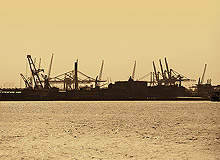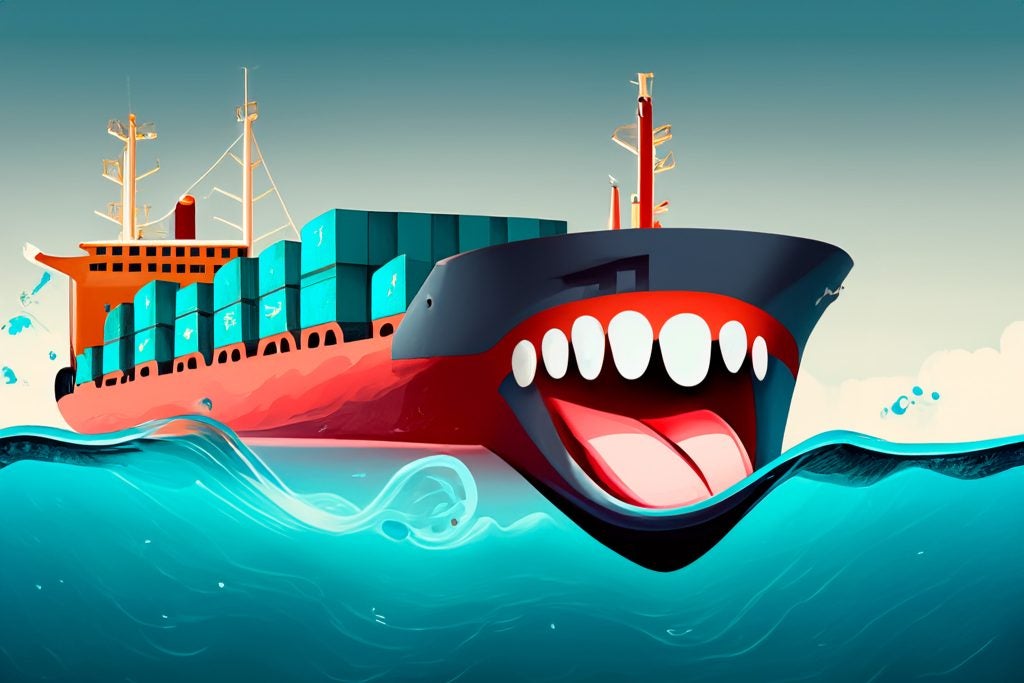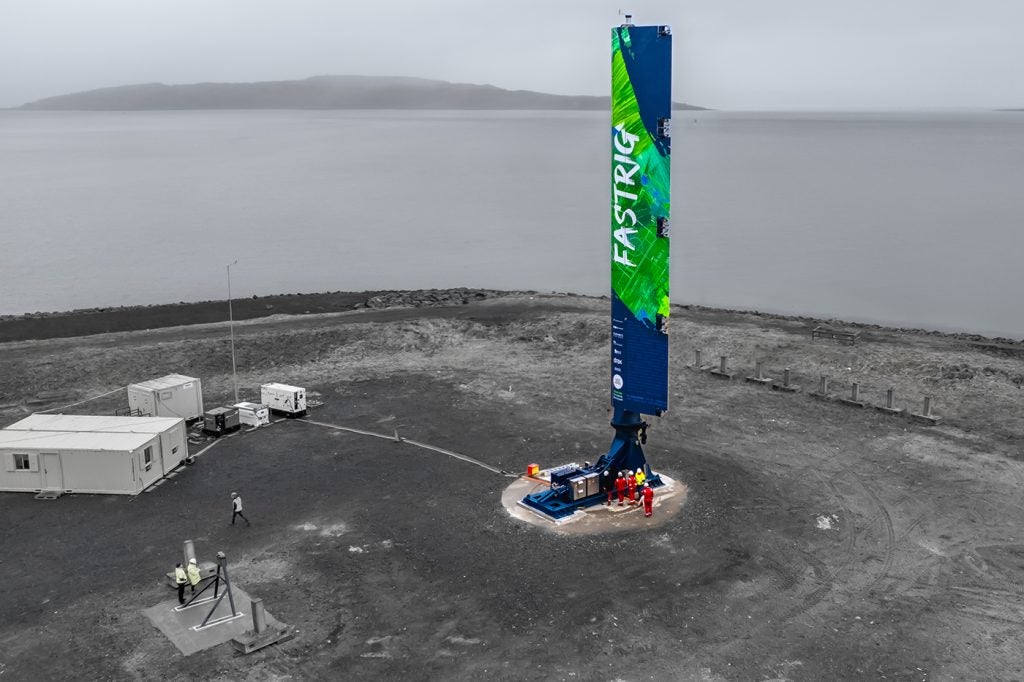
In January 2010, Finland’s Minister of Economic Affairs Mauri Pekkarinen noted the sorry state of the global shipbuilding industry: “The nearly 90% drop in the number of orders received by shipbuilders last year was a huge blow to the industry around the world.”
Following this drastic fall in the number of big build projects during the global recession, the shipbuilding industry is showing signs of recovery and growth in many regions.
One such country is Brazil, where analysts claim the number of ships being built has doubled over the last three years and will continue to grow exponentially, while South Korea’s giant shipbuilding sector continues to dominate the global stage.
In the first half of 2011, the Asian nation secured orders for 224 ships, representing more than half the compensated gross tons (CGTs) for orders placed worldwide.
Between January and June, South Korean shipyards accounted for 65% of all containerships and three-quarters of those over 8,000 twenty-foot equivalent units (TEU) loading capacity, as well as 19 new LNG carriers and all but seven new drill ships commissioned globally.
China, meanwhile, remained the largest shipbuilder with orders for 258 ships.
How well do you really know your competitors?
Access the most comprehensive Company Profiles on the market, powered by GlobalData. Save hours of research. Gain competitive edge.

Thank you!
Your download email will arrive shortly
Not ready to buy yet? Download a free sample
We are confident about the unique quality of our Company Profiles. However, we want you to make the most beneficial decision for your business, so we offer a free sample that you can download by submitting the below form
By GlobalDataRecent shipbuild tender awards
The future for big build programmes at shipyards seems bright, with Andrzej Szadzinski, the commercial area director of North & South America for major European shipyard Remontowa S.A. in Gdansk, Poland, said: “Vessels supporting the offshore industry will stay in demand as long as oil prices remain above $70 a barrel, while highly specialised vessels made to order should continue to be in demand heading into the future.”
- In Brazil, Petrobras is overseeing a tender process for construction of 21 drillers. The contract for construction of the first seven drillers has already been awarded to Sete Brasil, which is building the vessels at the Atlantico Sul shipyard in Pernambuco. Petrobras plans to invest a total of $224.7bn in shipyards and builds in Brazil between 2011 and 2015, with a good portion of this going towards building deepwater drillers.
- STX Finland Oy, meanwhile, signed a preliminary agreement with Viking Line in October 2010, which sees it constructing an environmentally-friendly cruise ship, with an option for building a second, sister vessel. The building phase was slated to start towards the end of 2011. President Juha Heikinheimo said the deal was crucial for both the company’s Turku shipyard and the Finnish shipbuilding sector following the global financial crisis, adding that an active shipyard is a far more competitive partner than an empty one when competing for new contracts.
- Earlier this month, P+S Werften shipyard in Germany won a €200m order for two offshore construction ships from Singapore’s Offshore Installation Group (OIG). The 172 semi-submersible ships are scheduled for delivery by 2013.
- South Korea’s Sungdong Shipbuilding & Marine Engineering also received an order this month for two more 82,000 dwt bulkers – each costing $35m – from Japanese shipowner Nisshin Shipping, scheduled for delivery in the second half of 2012.
- GulfMark Offshore has started the construction programme for three platform supply vessels (PSV) that will be built by Remontowa Shipbuilding in Gdansk. The total cost of the three vessels is expected to be $120m.
- In August, China’s Shanghai Waigaoqiao Shipbuilding (SWS) won an order to build four 206,000 dwt bulk carriers, scheduled for 2013 delivery, from Greece-based Polembros Shipping. The company had already received an order in March 2010 to build three 205,000 dwt bulk carriers from OceanFreight.
- Another South Korean builder, Oriental Precision & Engineering, signed $172m worth of building contracts with Elegant Shipping of the Philippines in August. The order comprises 15 vessels for delivery between March 2013 and March 2014, securing 67% of its building order target for this year in the process.
- Colombo Dockyard also received an order at the end of August to build four 3,600 ton capacity multipurpose PSVs for an unnamed Singapore-based owner.
The tender process
How exactly do shipyards deal with the lengthy and complex processes involved in tendering for and building commercial vessels?
A product lifecycle management resource paper on shipbuilding challenges and opportunities, first published by IBM in 2002, highlights considerations shipyards must take into account during the bidding phase of the tender process.
The report details the need to create contract specifications according to the owner’s requirements and set contract price and vessel delivery date, all of which requires close cooperation between the project development team, calculation team, planning team and procurement.
It goes on to claim that while superior product performance can be a boon for shipyards applying for a tender, the single most influential factor in the final selection of a shipbuilder is price consistency, although the shipbuilder’s track record is also important.
This pre-contract stage is vital to the decision-making process, with concept and contract design explicitly defining the technical and economic aspects of the project, while the report cites the fact that “decisions made during this stage dictate a major portion of the possible variables, making them difficult or costly to change afterwards.”
With this in mind, Szadzinski believes that when it comes to securing a tender nothing is more crucial than experience: “Experience protects investment.
There are no shortcuts or substitutes for it – regardless of the region a reliable, quality vessel build saves both money and time for the operator,” he said.
“Tendering on new builds requires an incredible understanding of a range of issues, such as the job the vessel will undertake, how to bring value-added services to the table and the level and type of expertise we are able to offer the client,” Szadzinski adds.
“It is vital that the shipyard not only be able to meet the customer’s expectations for the vessel being commissioned but also displays the experience and capability needed to enhance potential future projects. When placing a new order, whoever is awarding the tender must take all of these questions into consideration; traditionally, the yard that can display the most proficiency in these areas will secure the contract.”
Another aspect of the tendering process when selecting a shipyard is that regional regulations must be adhered to; for example in Europe, the tender process must follow the requirements of the EU Procurement Directives to ensure the process is open and fair.
The shipbuilding process
The basic shipbuilding process differs little from yard to yard, although obviously larger yards will be able to handle a greater workload due to larger workspaces and workforces, while the report from IBM points out that “although yard processes are similar, how the processes are undertaken in practice can be very different. The automation level varies significantly, as does the amount of work subcontracted.”
Large shipyards also usually have bigger lifting and transport capabilities, which can reduce the bed time and overall production time of the project.
The IBM paper highlights coordination as crucial to a successful build, stating: “The shipbuilding process is a complex interaction among the shipyard organisation, owner, partners, suppliers, class and authorities.”
It goes on to break the process into four distinct phases: pre-contract, contract to start of manufacturing, start of manufacturing to delivery and finally the guarantee period.
The principles of shipbuilding are based on concurrent design, engineering and installation, while the “coordination of design and procurement has become a central and demanding task.” The paper notes that delivery of essential information throughout the process is still the biggest stumbling block, shown by the fact that a cruise ship build can involve as many as 400 different parties ranging from national authorities, consulting and engineering offices to equipment and turnkey suppliers and subcontractors.
The shipyard’s role, according to the IBM paper, is to “maintain total control of the schedule and adjust it according to the available production facilities and resources,” while it also states that, “if we look at the shipbuilding process, it is typical that all the parties and stakeholders are more or less involved throughout the entire process.”
The paper cites the start of production as a major step in the build process: “After this the costs start to accumulate rapidly and it becomes extremely difficult to make additional changes to schedules or to the technology of the ship.”
Because of the complexity of the build process, “good project management tools, a well-organised project and the ability to respond to rapid changes in information can reduce the risks involved.” Other factors can also influence how smoothly a build runs. For example, a short design period that overlaps significantly with the production period greatly increases the risk of significant impacts caused by changes to the plans, while the need to effectively manage changes becomes a central consideration.
The yard’s responsibilities do not end on delivery of a completed vessel, however, as this begins a guarantee period usually lasting 12 months, during which time any deviation from system specifications is recorded and reported to the yard. They are responsible for scheduling the relevant repair team for maintenance problems that require immediate attention.
According to the IBM shipbuilding report, a passenger cruise vessel is one of the most demanding projects for a shipyard, involving long work hours and more material costs than any other commercial vessel: “Today, even the large European shipyards do not have enough workers to build such ships. Even they require varying amounts of subcontracted workers and the support of turnkey and supplier companies, beginning with the design work.”
The paper maintains that turnkey suppliers will become increasingly important, despite most countries not yet having the necessary infrastructure: “It requires a partnership arrangement and experience in working together. However, it appears to be the wave of the future, and most European cruise and ferry builders are moving in that direction.”
Streamlining the shipbuilding process
In recent years, technology has played a major role in helping to streamline the shipbuilding process, particularly during the planning and design stages.
South Korean-owned shipbuilder STX Finland Cruise Oy (formerly Aker Yards Oy), for example, has used Autodesk AliasStudio software since 2007 to render 3D design data evaluations instead of having to build a number of actual scale models. At the time, Janne Andersson, then with Architecture Design at Aker Yards, explained: “During exterior design and concept design, our materials must be flexible so we can change things very quickly. With AliasStudio, we can design a number of alternatives in several days and the realistic renderings and animations require no extra work.”
This flexibility allows designers the freedom to explore more ideas and communicate them effectively with potential clients. Andersson reinforced the notion that communication is integral to the process, saying that in order to do exterior work in AliasStudio, the yard needs to know about the steel construction design, hull design and the general arrangement of the ship, all of which is done using AutoCAD software.
Hyundia Heavy Industries (HHI), meanwhile, was the first shipbuilding company to incorporate Intel’s Itanium 2 Processor into its operations more than five years ago, speeding up several areas of the shipbuilding design cycle.
Jin Chil Kwon, shipbuilding design department general manager at HHI, announced in a 2007 case study on the processor that “analyzing ship design and construction using the CAE application previously took approximately 7 to 15 days; now it takes only 28 hours.”
Results were even faster on simulation software designed to virtually test structural design and construction, where the previous system’s eight-hour processing time was reduced on average to less than ten minutes. Because of this, the adoption of the Itanium 2-based platform effectively allowed HHI to take on more ultra-large ship orders each year and up its annual production from 30 to 70 ships.







